While crowds flock to Florence, they tend to overlook this gem of a town in the southern Italian region of Puglia. Nomad Paola takes us on a walking tour of Lecce's graceful piazzas and shares the best things to do and how to visit.
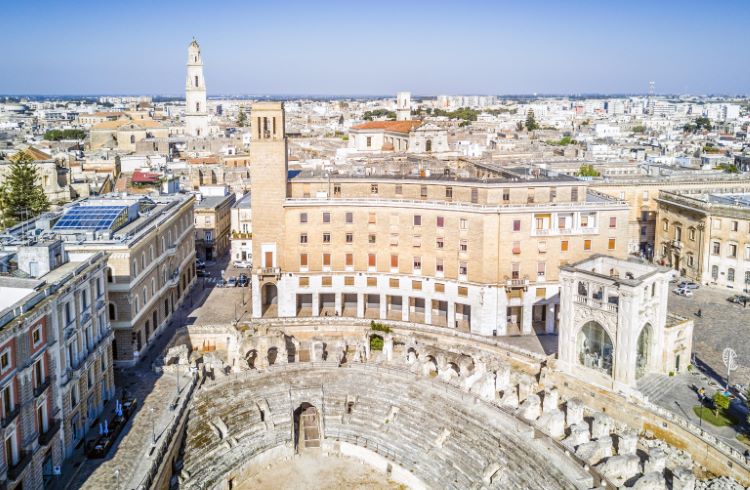 Photo © Jacek Sopotnicki
Photo © Jacek Sopotnicki
I remember, not so long ago, when any mention of a visit to or holiday in Puglia elicited a quizzical raise of the eyebrow. These days, this region of the Italian south is justifiably renowned for its turquoise seas, whitewashed medieval hill towns, and delicious regional food and wine. Strangely, however, despite travel journalists often referring to Puglia as the “new Tuscany”, travelers still overlook one of the region’s most extraordinary treasures: the city of Lecce.
- Lecce, Puglia: an architectural gem in the heel of Italy’s boot
- Finding the heart of the Old City
- Saint Irene and Saint Oronzo
- Buried treasure: Lecce’s Roman Amphitheater
- The breathtaking Basilica of Santa Croce
- Mouthwatering local food in Lecce
- Trip notes
Lecce, Puglia: an architectural gem in the heel of Italy’s boot
Lecce is found in Italy’s deepest south, about an hour and forty minutes by car from Bari, the regional capital. It’s an easy drive, down the coast on the motorway or along coastal roads that follow the beaches and provide expansive views of the Adriatic Sea and centuries-old olive groves. On arrival, I always head for the Old Town (Centro storico) – this is a city to be enjoyed on foot, so you can meander down ancient alleyways, walk into churches, piazzas, and cafes at leisure or sip on an aperitivo at sunset with freedom.
The Baroque architecture here is so unique, so beautiful, elaborate, and lyrical that it has its own name in architectural textbooks, and is known as the “Barocco Leccese”. Florence leaves you breathless, but I promise, so will Lecce. There are countless chapels and churches, vast palazzi carved from the soft, local, golden limestone – pietra Leccese – which artisans of the past joyfully sculpted to decorate the facades. I like to take the time to really stop and look at the minute, sculpted detail on some of the buildings.
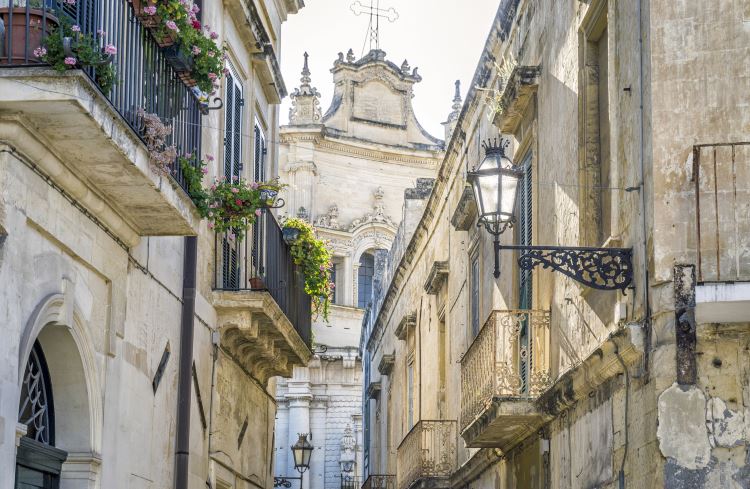
Finding the heart of the Old City
The formal entry to Lecce’s historic center is through Porta Napoli, an arch built in 1548 in honor of King Carlo V who had built the defensive fortifications that once surrounded the city. The old walls no longer exist and so now, the magnificent arch stands triumphally alone, flanked by two Corinthian columns and the Habsburg royal crest. Over the decades, archaeologists working around the stone portal have uncovered a wealth of funereal objects from the Messapian civilizations; tribes who lived in the area some 7,000 years ago.
From here, it’s a short walk to Piazza del Duomo (cathedral) in Lecce’s historic heart. Dominated by the Cathedral, this is one of Italy’s most beautiful piazzas, vast and airy in the daytime but truly magical at night as it is very gently lit to highlight the warm gold of the stone and the sensuous lines of the buildings. Its spacious feel contrasts with the labyrinth of narrow streets that run outwards in every direction. Whatever time I arrive, I take time to simply stand in the center and admire the Cathedral’s unusual dual facades – one which looks into the piazza while the other looks westward. The campanile, or old bell tower, the seminary, and Bishop’s Palace are superlative examples of the Barocco Leccese.
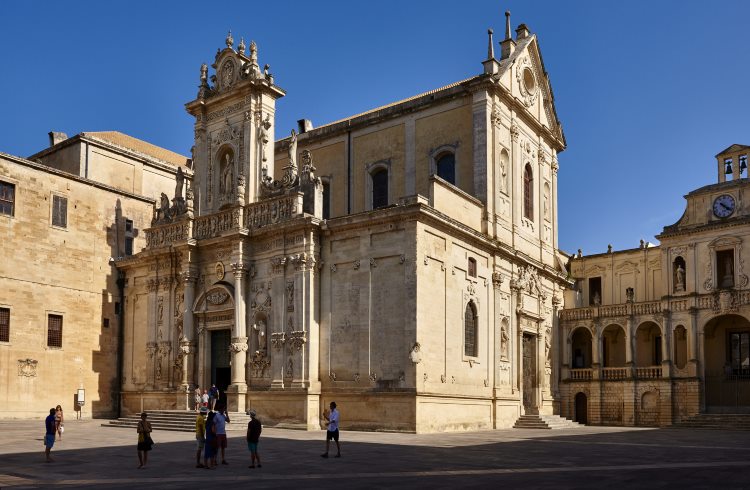
Saint Irene and Saint Oronzo
Next on the walking tour is the Church of Saint Irene, patron saint of the city until Pope Alexander VII rudely gave her the shove and installed a man – Saint Oronzo – in her place. (He no longer has a church but a piazza, just a short walk away).
Saint Irene’s was begun in 1591 and is modeled on one of Rome’s great Basilicas, Sant’Andrea del Valle. The site of several, significant moments in Italian history, including the referendum that brought Lecce into the Kingdom of Italy in 1860, it boasts eight altars, some so intricate and ornate that, in my mind, they almost look like they are embroidered from stone. Piazza Saint Oronzo, just around the corner, is an odd and not entirely satisfactory mix of ancient and Fascist-era architecture but still worth checking out, as its cafes are lively and lovely for breakfast.
Buried treasure: Lecce’s Roman Amphitheater
It isn’t exactly rare to find a Roman amphitheatre in Italy, but Lecce’s is right in the middle of the old town, brilliantly preserved and incredibly, only rediscovered in 1901. It had been buried by other structures for millennia until a builder digging foundations for a new bank found the treasure. Built during the Emperor Hadrian’s reign, when Lecce was just a small trading port, it once held up to 15,000 spectators. Still partially buried, its horseshoe shape and seats are kept in semi-darkness at night, adding to its beauty and mystery.
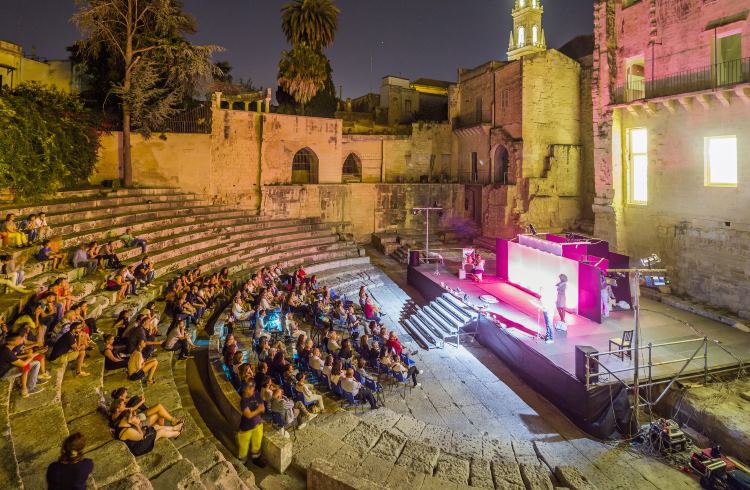
The breathtaking Basilica of Santa Croce
The first time I clapped eyes on the Basilica of Santa Croce (Holy Cross), just a stone’s throw from the center, I was reduced to silence, unusual as all my friends would attest. This church began life in the 12th century, thanks to the hermit Pietro de Morrone who would later become Pope Celestine, but the current incarnation was begun in 1549 and took more than a century to finish. It’s the delicacy of the stonework that is unforgettable. Every inch of the façade is decorated with a dream-like riot of figures, from sheep and bizarre mythical birds to chubby cherubs and even what look like dodos.

Mouthwatering local food in Lecce
Breakfast is my favorite meal in Lecce: Caffe Leccese (espresso, in summer served icy cold) with a shot of sweet, locally produced almond syrup. This must be washed down with a pasticciotto Leccese, shortcrust pastry filled with a plain, lemon scented custard or an array of flavors including my favorite, pistachio. You must eat this warm from the oven. The cuisine of Lecce – cucina Salentina – is typical, fresh Mediterranean fare with fresh pasta at the heart and legumes or seasonal greens on top. Focaccia is a specialty, and fresh fish always a joy.
Trip notes
Fly into Bari or Brindisi airports and hire a car for the easy drive. Many of the city’s old palazzi have been turned into elegant B&Bs, ranging from five-star luxury to smart budget rooms. Lecce is much loved by Italians in summer, so the best time to avoid crowds is late spring or early autumn when you will still get blue skies and sunshine.
Related articles
Simple and flexible travel insurance
You can buy at home or while traveling, and claim online from anywhere in the world. With 150+ adventure activities covered and 24/7 emergency assistance.
Get a quote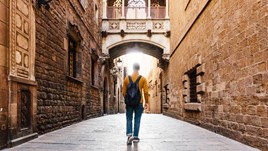
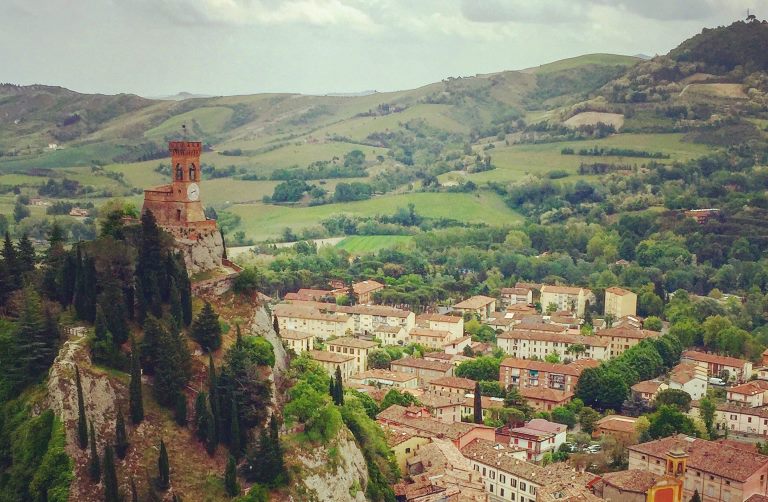
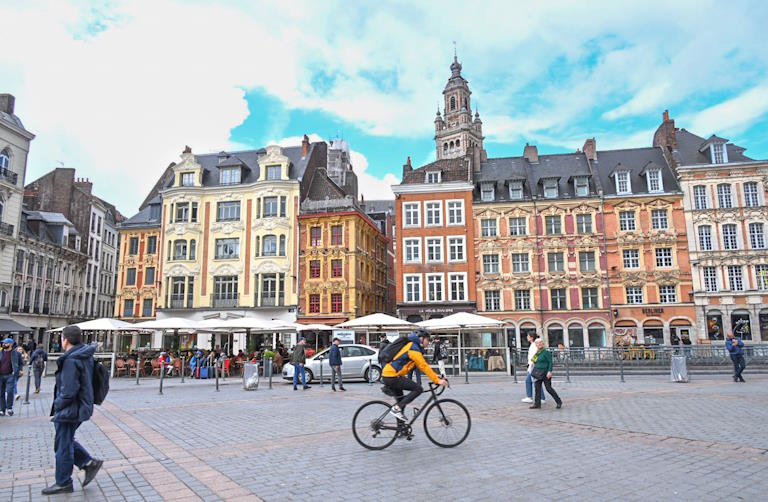
No Comments